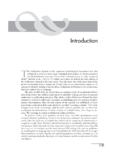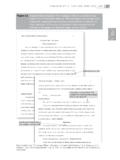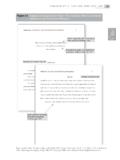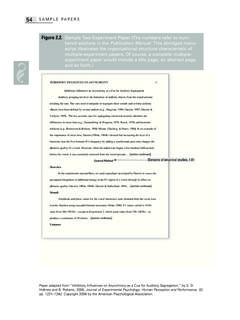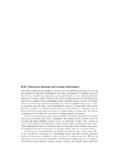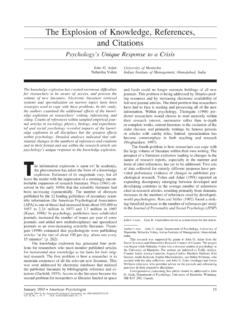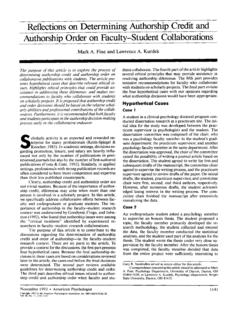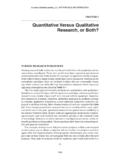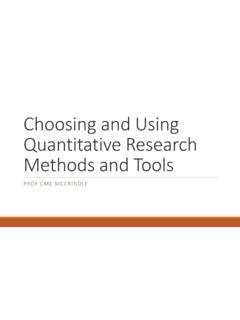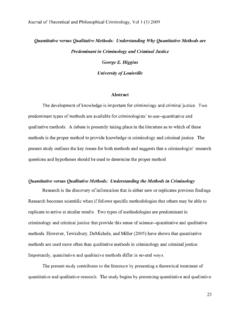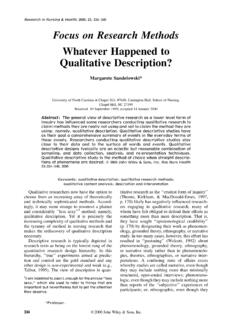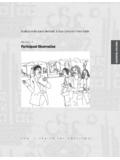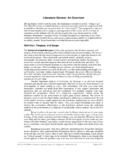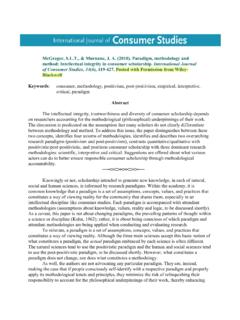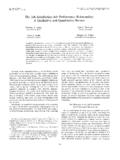Transcription of Traditions and Alcohol Use: A Mixed-Methods …
1 FEATURET raditions and Alcohol Use: A Mixed-Methods AnalysisFelipe Gonza lez CastroArizona State UniversityKathryn CoeUniversity of ArizonaAn integrative Mixed-Methods analysis examined traditional beliefs as associated with beliefs aboutself-care during pregnancy and with Alcohol abstinence among young adult women from two Mexico border communities. Quantitative (measured scale) variables and qualitative thematicvariables generated from open-ended responses served as within-time predictors of these health-relatedoutcomes. A weaker belief that life is better in big cities was associated with stronger self-care beliefsduring pregnancy. Also, a weaker belief that small towns offer tranquil environments was associated withtotal abstinence from Alcohol .
2 Regarding theHispanic Paradox,these results suggest that acriticalappreciation of cultural Traditions can be protective, as this avoids stereotypical or idyllic views of urbanor rural lifeways, and promotes self-protective beliefs and :family Traditions , rural lifestyle, mixed methods , Hispanic paradox, Alcohol useThe Hispanic Paradox Among women from rural communities, traditional lifeways(traditionalism) may promote certain healthy outcomes (Coe,Attakai, Papenfuss, Giuliano, Martin, & Nuvayestewa, 2004);by contrast, a loss of cultural Traditions during the process ofacculturative change may promote disease or disorder. RecentHispanic health research has identified anHispanic paradoxamong low-acculturated Hispanics/Latinos,1that is character-ized by unexpectedly lower rates of adverse health outcomesobserved among the least acculturated Mexican immigrantsrelative to their more acculturated Mexican American paradox has been observed within three health-relatedareas: the perinatal health of Hispanic/Latina women, mortalityrates from cardiovascular disease, and rates of psychiatric dis-order (Vega et al.)
3 , 1998).Perinatal studies of low-birth-weight infants (Balcazar, Krull, &Peterson, 2001; Fuentes-Afflick, Hessol, & Pe rez-Stable, 1999;Gould, Madan, Qin, & Chavez, 2003) have shown healthier birthoutcomes among the poorest and least acculturated Mexicanwomen relative to more acculturated and affluent Mexican Amer-ican women. Similarly, in community-based studies of diagnosedpsychiatric disorders, low-acculturated migrant Mexican farm-workers, when compared with native-born Mexican Americansand with non-Hispanic White Americans, exhibited the lowestrates of psychiatric disorder (Alderete, Vega, Kolody, & Aguilar-Gaxiola, 2000). Some investigators have argued that methodolog-ical flaws produce these paradoxical effects (Palloni & Morenoff,2001; Smith & Bradshaw, 2006), whereas others have argued thatobserved confounds do not obviate these paradoxical effects(Morales, Mara, Kington, Valdez, & Excarce, 2002).
4 The recentassertion by Smith and Bradshaw (2006) that the Hispanic paradoxdoes not exist is based on a study that uses a Spanish surname asa proxy measure for Hispanic ethnicity and also defines healthadvantage narrowly by using mortality as their major health out-come. Unfortunately, several of these studies have not examineddeeper aspects of culture, such as traditional beliefs and behaviors,as potential mediators of salubrious health outcomes, despite ex-posures to poverty and adversity. Accordingly, the literature re-mains unclear regarding possible mechanisms that may mediate avariety of salubrious health outcomes. More refined and theory-driven studies are thus needed to examine this Hispanic paradox(Mendoza & Fuentes-Afflick, 1999) from a deeper and moreintegrative cultural , Traditions , and ResilienceThe social cognitive theory of gender development (Bussey& Bandura, 1999) has postulated that certain cognitive andsocial factors operate as self-regulatory influences on gender-linked conduct.
5 In turn, these factors are rooted in culturallylearned outcome expectations ( , social and self-imposed1We use the termsHispanicsandLatinos/Latinasintercha ngeably, asboth forms are used within the literature to refer to people from the UnitedStates who are of Hispanic Gonz lez Castro, Department of Psychology, Arizona State Uni-versity; Kathryn Coe, Department of Psychology, University of research was supported by a grant from the Arizona DiseaseControl Research Commission. Work on this article was supported byGrant P01 DA 1070 from the National Institute on Drug Abuse (P. , Principal Investigator) and by Grant R24 DA 013937 from theNational Institute on Drug Abuse (Flavio Marsiglia, Principal Investiga-tor).An earlier version of this article was presented on June 3, 2000, at the8th Annual Meeting of the Society for Prevention Research, in Montreal,Quebec, concerning this article should be addressed to FelipeGonz lez Castro, Department of Psychology, Arizona State University,Tempe, AZ 85287-1104.)
6 E-mail: Diversity and Ethnic Minority PsychologyCopyright 2007 by the American Psychological Association2007, Vol. 13, No. 4, 269 2841099-9809/07/$ DOI: regarding conduct perceived as congruent or as in-congruent with perceived gender norms). Such cultural andpersonalized standards of conduct may guide self-directed be-havior in ways that introduce protection against health prob-lems, including the use of Alcohol , tobacco, and other drugs(Cuadrado & Lieberman, 1998).Traditional cultural expectations constitute specific, oftengender-based, norms that influence behavior by specifying re-warding or adverse outcomes as consequences of specific be-haviors (Bussey & Bandura, 1999). Specifically, regarding theconsumption of Alcohol , Mexican gender-linked traditional cul-tural expectations communicate community disapproval of al-cohol use by Mexican women while communicating a commu-nity acceptance of Alcohol use among men.
7 In the past,disparities in the rates of Alcohol use by Mexican men relativeto Mexican women have been shown to be greater than differ-ences observed among White American men and women(Karno, Hough, Burnam, et al., 1987). These notable epidemi-ological differences by gender and ethnicity implicate the ef-fects of traditional gender-linked attitudes and expectationsregarding the use of Alcohol , tobacco, and other drugs. Withintraditional rural Mexican communities, Alcohol use has beenregarded as incompatible withMarianismo, the idyllic image ofa motherly woman (Cuadrado & Lieberman, 1998; Gil &Vazquez, 1996). As one social indicator of the effects of cul-tural and gender norms on Alcohol use, a large epidemiologicalstudy of Alcohol use conducted within three cities in Mexico(Slone, Norris, Rodriguez, et al.)
8 , in press) reported lifetimerates of abstinence from Alcohol (defined as consuming 12drinks or less in a lifetime) to be 66% for Mexican womenversus 23% for Mexican men. As noted previously, withintraditional communities, Mexican men have typically been al-lowed to consume Alcohol freely, whereas Mexican womenhave been discouraged from doing so. Thus, the reported highrates of abstinence among urban Mexican women would beexpected to be equivalent and perhaps not as high as thoseamong rural Mexican women, given that traditional gendernorms are often more salient within rural communities. How-ever, these traditional cultural practices are also changing underthe ubiquitous processes of acculturation and modernization(Markides, Ray, Stroup-Benham, & Trevino, 1990).
9 Cultural Traditions are products of learned and shared stan-dards for behavior (Harwood, 1981) that are transmitted fromelders to children. Traditional people, by definition, adherestrongly to their traditional lifeways although among Mexican-heritage people this adherence is often challenged by ubiquitouspressures to acculturate into modernistic American society(Ramirez, 1999). A dynamic tension exists worldwide todaybetween sociocultural forces that endorse the preservation orreestablishment oftraditionalism(adherence to long-standingcultural beliefs and customs) and sociocultural forces that en-dorsemodernism(Westernized changes involving the adoptionof new lifeways that include innovative and culturally differentbeliefs and behaviors; Triandis, 2000).
10 Within the southwesternUnited States, these dynamics are sustained by socioculturalmobility, the ongoing immigration from Mexico to the UnitedStates; across the United States, these dynamics are sustainedby migration from rural to urban communities (Massey,Durand, & Malone, 2002). Despite facing many chronic stres-sors, many migrants and immigrants will nonetheless exhibitremarkable resiliency, possibly derived from traditional culturallifeways that encode prescriptive and often restrictive guide-lines aimed at promoting survival and for Rigor in Qualitative Methodologies for ResearchThe field of qualitative research has been rich in strategies forentering the field but relatively weak in methods for the anal-ysis of textual information (verbal evidence).

